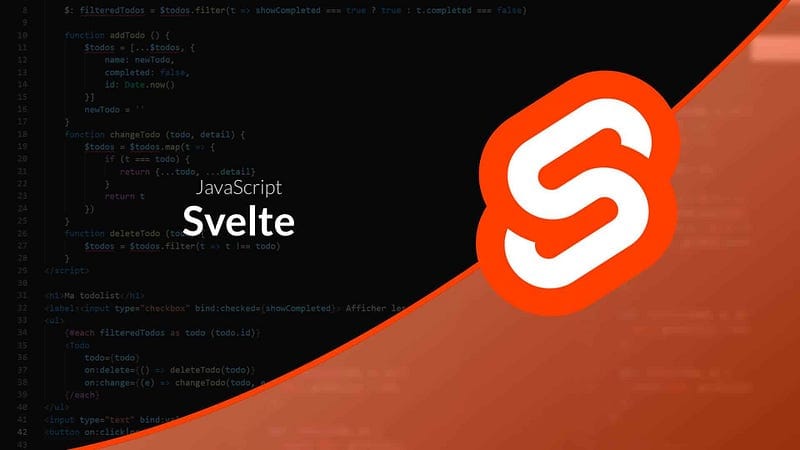The Svelte Framework
Svelte is an open-source, component-based JavaScript framework that simplifies the process of building modern web applications.

Svelte is an open-source, component-based JavaScript framework that simplifies the process of building modern web applications.
Created by Rich Harris in 2016, Svelte stands out from other frameworks like React, Angular, and Vue by introducing a new paradigm that shifts the work from runtime to compile time.
Instead of shipping a runtime library to manage the application state and UI, Svelte compiles your components into highly efficient JavaScript code, resulting in faster load times and smoother user experiences.
Key Features of Svelte
- Compiler-centric Approach: Unlike most JavaScript frameworks, Svelte does not have a virtual DOM. Instead, it compiles your code into small, self-contained JavaScript modules. This eliminates the need for additional runtime libraries, resulting in faster, leaner applications.
- Reactive Programming: Svelte adopts a reactive programming model, allowing you to update the UI whenever the state changes automatically. By using simple assignment statements, Svelte creates efficient code that updates the UI without the need for explicit event listeners or complex state management libraries.
- Component-Based Architecture: Svelte promotes a modular approach to building web applications, where you can create reusable components with encapsulated styles and logic. This makes it easy to maintain and scale your applications over time.
- Seamless CSS Integration: Svelte makes it simple to scope your CSS styles to specific components, ensuring that styles don’t accidentally leak into other parts of your application. This makes maintaining a consistent look and feels across your app more accessible.
- Easy Learning Curve: Svelte’s simple syntax and minimal boilerplate make it easy for developers to pick up, even if unfamiliar with other JavaScript frameworks. This makes Svelte an excellent choice for teams looking to adopt a new framework quickly.
Benefits of Using Svelte
- Performance: Svelte’s compile-time approach to building web applications results in faster load times and improved runtime performance, as there’s no need for a heavy runtime library.
- Smaller Bundle Sizes: Svelte applications typically have smaller bundle sizes than applications built with other popular frameworks by compiling your components into efficient JavaScript code. This leads to quicker load times and improved user experiences.
- Simplified State Management: Svelte’s reactive programming model simplifies state management, making it easier to reason about your application’s state and update the UI accordingly.
- Better Developer Experience: Svelte’s easy-to-learn syntax and streamlined development process make it a pleasure to work with, enabling developers to build and iterate on their applications quickly.
Comparing Svelte to Other Popular Frameworks
While Svelte shares some similarities with popular frameworks like React, Angular, and Vue, its unique approach to compiling components sets it apart.
This compiler-centric approach enables Svelte applications to be highly performant and lightweight without sacrificing the flexibility and power offered by other frameworks.
However, as a relatively newer framework, Svelte may have a less extensive community or ecosystem than its more established counterparts. But that’s changing fast.
Resources
You can visit the Svelte project’s website to read detailed docs and tutorials and learn more about it here.
Did you like the article? Leave a comment! Share it!
Follow me on Medium, LinkedIn, and Twitter.
All the best,
Luis Soares
CTO | Head of Engineering | Cyber Security | Blockchain Engineer | NFT | Web3 | DeFi | Data Scientist
#front-end #reactive #performance #compiler #UI #userexperience #svelte #sveletekit #javascript #software #architecture #application #softwaredevelopment #softwareengineering



